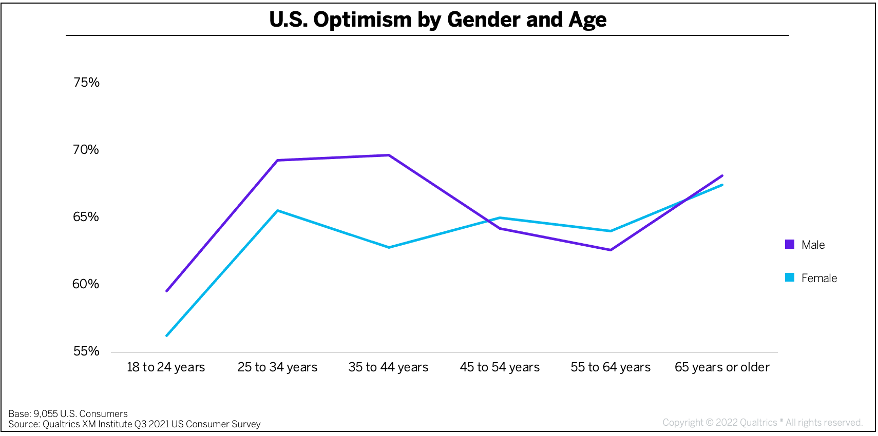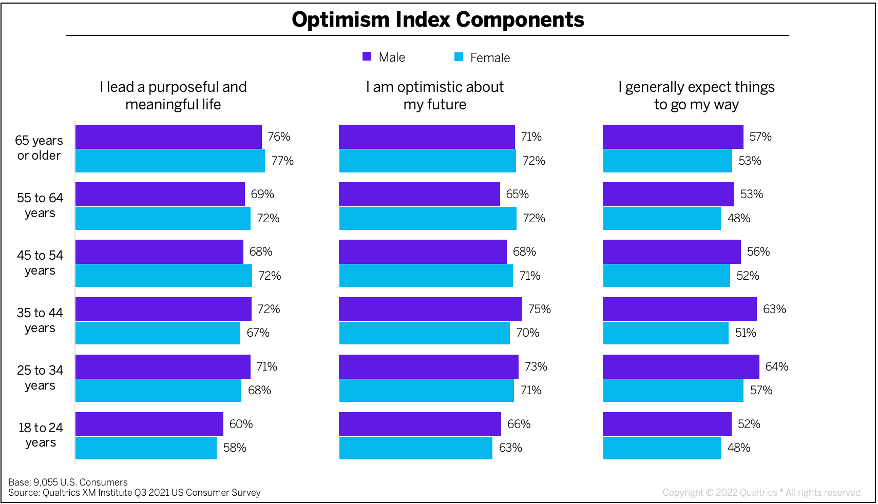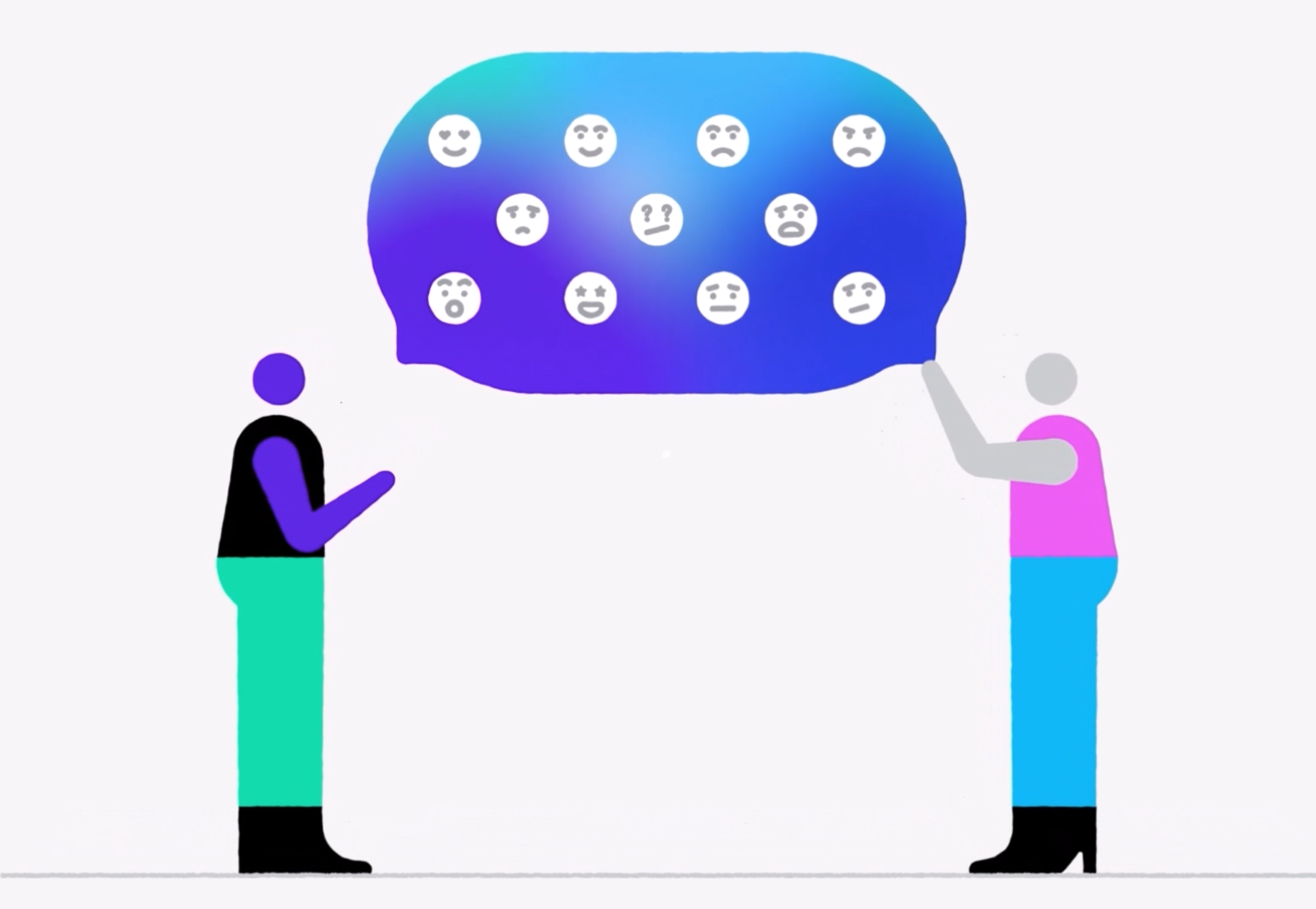For the first time, the XM Institute examined the optimism of the U.S. population. We analyzed responses from more than 9,000 U.S. consumers to develop the XM Institute Optimism Index. The Index is derived from the average percentage of people who agree with the following statements:
- I lead a purposeful and meaningful life
- I am optimistic about my future
- I generally expect things to go my way
We examined the Index across ages and genders and found that:
- Young men are more optimistic than young women. On average, 66% of men are optimistic, three percentage-points higher than the optimism index score for women (63%). For all age groups younger than 45, men have a higher optimism score.
- 35- to 44-year olds have the largest gender optimism gap. There is a seven percentage-point difference between 35- to 44-year-old men’s and women’s optimism, the largest gap between genders of all age groups. For all older age groups, there is only a one-point gap in optimism between genders.
- Gen Z is the least optimistic. 18- to 24-year-olds have by far the lowest optimism score, 58%, which is 5 points lower than the second least optimistic age group, 55- to 64- year olds. Gen Z women are the least optimistic of all gender and age groups, with a score of 56%.
- Optimism sharply increases as people enter their 30s. The consumer optimism index increases 10 points between 18- to 24- and 25- to 34-year-olds with the largest gain between concurrent age groups.
- Men’s optimism peaks earlier than women’s. For men, the highest level of optimism is in the 35- to 44-year-olds, and then it declines until they hit their 60’s when it recovers somewhat. Women’s optimism, however, hits its peak level with the oldest group.

Delving further into each component of the XM Institute Optimism Index, we can see that:
- Overall, men and women feel the same amount of purpose and optimism. On average across all ages, 69% of men and women said they feel they lead a purposeful and meaningful life, and 70% said they are optimistic about their future. The gender gap in the overall Index scores is driven by the third component, in which we can see that…
- Men expect things to go their way more frequently than women. Across all age groups, men are more likely to agree that they generally expect things to go their way than women. The largest gap is between 35-to 44-year-old men and women, with men 12 percentage-points more likely to have this positive expectation.
- Younger women feel less purpose and are less optimistic than younger men. On average, men under 45 years old are 3 points more likely to agree that they lead a purposeful and meaningful life and are optimistic about their future than women under 45 years old.
- Older men are less optimistic and feel less purpose than older women. Women over 44 years of age are, on average, 3 points more likely to agree that they are optimistic about their future and lead a purposeful and meaningful life than their male peers.

This data comes from XM Institute’s September 2021 U.S. Consumer Study of 9,055 residents, and results are analyzed based on self-described gender and age. We set sample quotas to be demographically representative of the U.S. population for ethnicity, income, and region, in addition to gender and age.
The bottom line: Let’s find ways to raise optimism, especially for younger women and older men.
Bruce Temkin, XMP, CCXP, is the Head of Qualtrics XM Institute
Talia Quaadgras is a Senior Research Associate with Qualtrics XM Institute





